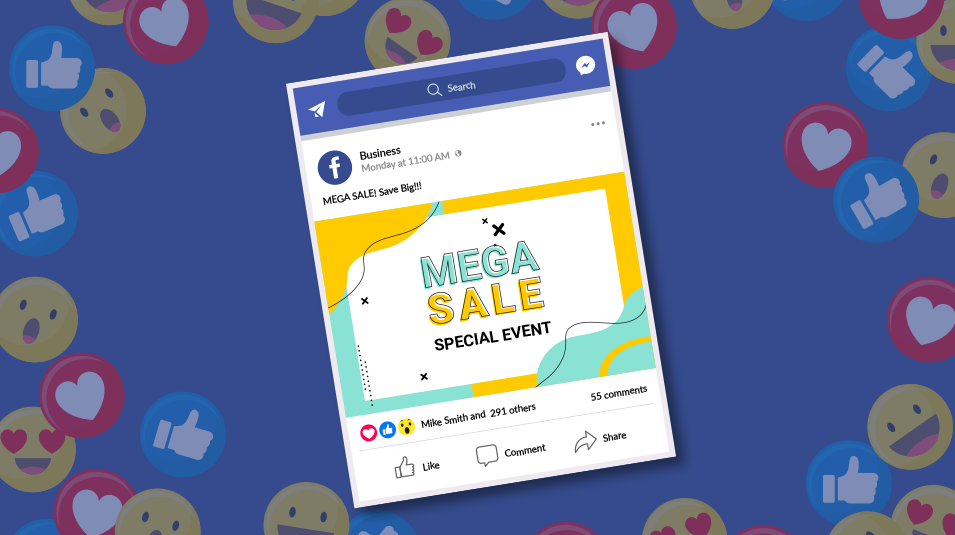
Humans are hard-wired for novelty. New places, new experiences, new things. New customers. But new is not always better. In business, customer retention—the ability to foster long-term relationships with the same customers—is every bit (if not more) important than the push to bring in new ones.
Below, we'll cover everything you need to know about how to retain customers:
- What is customer retention?
- What does customer retention matter?
- How do you measure customer retention?
- What drives customer retention?
- Top customer retention strategies
What is customer retention?
Boost your revenue with a strong customer retention strategy. Via Unsplash.
Customer retention is like water retention, only you’re holding onto something you actually want: customers.
The goal of a customer retention strategy is to build long-lasting relationships with clients so that they keep buying your product or service. It’s about providing a good customer experience, cultivating trust, and delivering on expectations so that buyers return to your brand instead of switching to a (lesser!) competitor.
Why does customer retention matter?
Lots of companies pour resources into customer acquisition while short-changing customer retention. That’s a mistake. Here are the benefits of having a solid customer retention strategy:
It's cheaper
It typically costs five times more to create a new customer than it does to hang on to an existing one. Granted, some experts question this stat given the predictive analytics tools a company now has at its disposal. But overall, pros agree that customer retention costs less than customer acquisition and promises a bigger bang for your buck.
It generates revenue
Let’s say Madonna announces a stadium tour (oh, wait, she did). Is she going to sell out arenas if only her Gen Z fans buy tickets? Heck no. She needs her OGs to open their wallets.
Now apply that thinking to your business: Your company’s revenue depends on your loyal customers—your longtime fans.
For the pop-culture illiterate (no judgment), here’s some data-driven proof to back up the value of customer loyalty. According to Bain & Company, increasing customer retention rates by 5% boosts profits by 25% to 95%. Wowza!
And that’s not all: Repeat customers get more profitable with time. In apparel, for example, the average repeat customer spends 67% more in months 31 to 36 of their shopping relationship than they do in months 0 to 6.
As if you’re not already drafting a new customer retention strategy as we speak, there’s this: Research by Monetate shows that an e-commerce customer who’s shopped once with a company is over three times more likely to make a repeat purchase than a new customer.
You like money, don’t you? Then customer retention is a no-brainer.
It creates brand ambassadors
A happy customer is an invaluable asset. They’ll sing your praises at dinner, drop a link to your website in the group chat, and post a rave review about your new product on TikTok. Word of mouth is free and effective marketing, and you get it by creating loyal customers.
How do you measure customer retention?
Grab a calculator and figure out your customer retention rate. Via Unsplash.
Customer loyalty isn’t something you measure with your gut. There are calculable KPIs for checking in on the health of your company, and they only require a little bit of math (we promise).
Customer retention rate (CRR)
Your customer retention rate is the percentage of existing customers your company retains over a specific period of time, whether you’re looking at a month, a quarter, or a year. The formula is fairly straightforward, even if algebra isn’t your strong suit:
CRR = [(E-N)/S] x 100
- "E" is then umber of customers you have at the end of the period
- "N" is the number of new customers acquired during that period
- "S" is the number of customers you started with
If you kick off the year with 500 customers, gain 150, and close out with 525, your retention rate would be [(525-150)/500] x 100.
That’s—*takes out calculator*—75%.
So what’s a good retention rate? On average, a healthy CRR falls between 70% and 80%. But that number varies across industries.
According to Statista, the customer retention rate for media companies is 83% whereas the rate of the restaurant/travel/hospitality industry is 55%. Even though it seems like there's consumable news everywhere we look, there are infinitely more ways to spend our leisure time (and let's face it—most of us have more time to scroll than we do to eat out or go on vacation).
Other CRR examples by industry:
- Insurance: 83%
- Automotive and transportation: 83%
- Banking: 75%
- Manufacturing: 67%
- Retail: 63%
Repeat purchase rate (RPR)
This metric tells you the percentage of customers willing to make a second purchase from your company. You calculate it by dividing the number of customers who bought from you more than once in a given period by the number of unique customers who shopped with you in that same timeframe.
You want your RPR to be in the ballpark of 30%, but the higher the better.
Customer lifetime value (CLV)
A client’s customer lifetime value indicates how much you’ll earn from them over the course of your business relationship. The higher a customer’s CLV, the harder you should work to retain that customer.
So what’s the formula? Multiply the average purchase value of your customer by the average purchase frequency of your customer by the average lifespan of your customer—got that?—and you’ll have your CLV.
Churn rate
This KPI looks at the percentage of customers who’ve cut ties with you over a given period of time (womp, womp). Unlike your CRR and RPR, your churn rate should be low (no more than roughly 5% per month). Here’s how you measure it:
[(S-E)/S] x100
- "S" is the number of customers you started with
- "E" is the number of customers you have at the end of the period
Let’s say you started off the month with 5,000 customers and ended with 4,800. Your churn rate would be:
[(5,000-4,800)/5,000] x 100 = 4%.
If you notice your churn rate has gone up month-over-month or year-over-year, it’s time to take stock of what’s going wrong at your company. Are you falling short of customer expectations? Are you getting edged out by competitors? Are your marketing efforts stale? Are you seeing a lot of involuntary dropouts (people whose credit cards have expired, for example)?
It’s important to understand why you’re losing customers and come up with a retention strategy that addresses problems head on.
What are the key drivers of customer retention?
Customer support is a cornerstone of customer retention. Via Unsplash.
If you don’t want customers to ditch your brand, what do you have to do to keep them on board? The factors that contribute to customer loyalty won’t come as much of a surprise to anyone who’s shopped before (so unless you’re a baby who can read, that probably includes you). But they’re important to unpack. They include:
Trust
If you want to attract loyal customers, you have to earn their trust. That means delivering on promises and staying transparent (hidden fees are customer kryptonite).
Convenience
Nobody wants to spend their precious free time completing a transaction or fumbling through a complicated onboarding process. Make your customer’s life easier and they’ll make your customer retention rate higher. It’s a win-win.
Appreciation
Customers want to feel valued, and if they don’t, there are plenty of other places they can—and will—take their hard-earned money.
Customer service
Problems are going to come up. That’s okay. But if your customer-service is lacking—if customers feel ignored or frustrated in the event of a hiccup—your customer relationships are going to suffer.
Communication
They say in romantic relationships that “communication is key.” Well, that rule applies to your customer relationships, too. Keep clients in the loop about things like delays or product updates, and they’ll be less likely to dock you points for any inconveniences.
Shared values
Customers want to know their money is going to a good company—a company that upholds their ideals. Does your brand care about the environment? Does it advocate for diversity? Leverage your values to attract like-minded customers.
A sense of community
People crave connection now more than ever. If they feel close to their fellow shoppers, the brand itself, or the creators behind it, they’ll have a better customer experience.
Now that you understand the fundamentals of customer retention, it’s time to think about how you can channel them into actionable retention strategies.
8 strategies for improving customer retention
Who doesn’t love a perk? Consider boosting client retention with a customer loyalty program. Via Unsplash.
Having a strong client retention strategy will keep your retention KPIs where they need to be. Not sure where to start? Well, lookie here—we’ve got just the recommendations you need:
1. Make sure your customer service reps are top notch
This is a biggie. According to a Gartner report, when customers have a positive customer service experience, they’re 82% more likely to repurchase or renew, and 97% more likely to give your business positive word of mouth.
On the flipside, research from The Northridge Group shows that 72% of buyers will switch to a competitor after just one bad customer experience.
The sooner you can address a customer’s problem or concern, the better, so the first thing to consider is whether your company is offering adequate—i.e. near immediate—response times. Next, determine whether the service itself is up to snuff. Representatives are the face (or voice) of your company. They should be calm, respectful, and eager to find solutions for your clients.
If you think your staff needs a refresher on how to provide great customer service, consider sending out a training video they can watch from anywhere in the world. As it turns out, 89% of employees feel video is an effective tool for training.
2. Streamline the onboarding process
You want to get your customers up and running as quickly as possible (the sooner they see how great your product is, the sooner they can start spreading the word about it). That means offering clear guidance on how they can get started.
Screencast videos, which pair digital screen recordings with instructive audio, are a great way to offer an immersive walk-through experience. While you’re at it, demo videos are a good way to entice customers, too.
3. Invite customer feedback
Let clients know you value their opinion by inviting customer feedback. Send out surveys, make calls, and add interactive elements like multiple choice questions, polls, and open responses to customer-facing videos.
From there, you can identify any potential weaknesses in your business and make data-informed decisions about product updates, site functionality, and more.
4. Launch a loyalty program
Loyalty programs incentivize spending by offering perks and rewards, and discourage high-value customers from defecting to competitors. Why would a shopper go to X coffee shop, for example, when they’re one small dark-roast away from getting a free latte at Y coffee shop?
5. Personalize the consumer experience
Consumers receive thousands of marketing messages a day, which means brands that personalize their communication have the greatest chance of standing out and holding an inundated buyer’s attention.
Brands with loyalty programs have a leg up, because they can use customer data to design their consumer-centric approach.
6. Maximize cross-selling opportunities
Cross-selling is when a company offers products that satisfy the adjacent needs of its customer base, like when an insurance company offers car and home-owner's insurance, or when a beauty brand sells makeup and makeup remover. When you cross sell, you re-engage a customer and increase their lifetime value.
7. Show your values
As mentioned, customers are keen to buy from businesses that align with their values—it helps them feel connected to the brand. Think about what your company stands for and don’t be afraid to share that with your customers—an inspiring video is a great way to get your message out.
8. Engage your customers
Engage your customers on social media and make them feel like they’re part of a community. Via Unsplash.
You want consumers to feel like they’re a part of something by shopping with your brand, like they’re cool (or smart or funny) by association. One way to do that is to engage your customer base. Respond to their comments on social media. Stitch their TikToks. Ask them to contribute a customer testimonial. Make things interesting!
Bottom line
It’s easy to overlook the importance of customer retention when the call of customer acquisition is so loud. But customer experience is critical to the success of your business. So get started! Crunch some numbers, see how your company is fairing, and update your retention strategy today.


